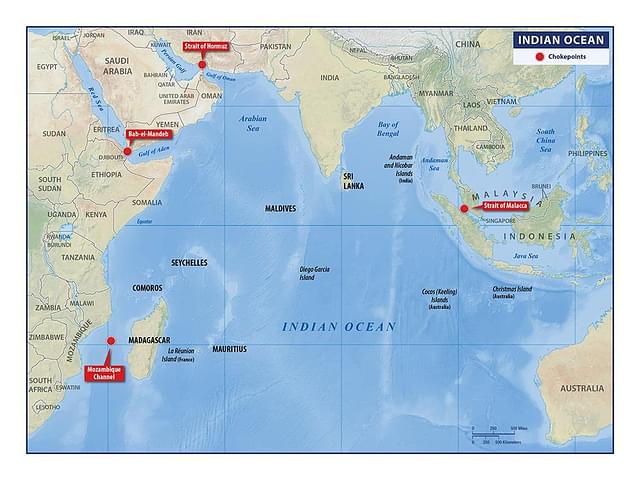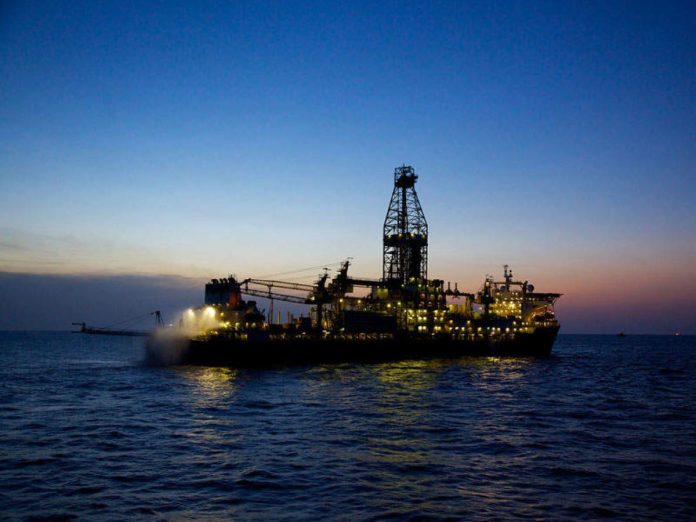Prime Minister Narendra Modi’s recent meeting with Mozambique President Filipe Nyusi on the sidelines of the Vibrant Gujarat Global Summit is a good moment to reflect on the growing significance of the African country abutting the Indian Ocean.
1) Mozambique LNG Project
The Rovuma Area-1 LNG Project in Mozambique’s northern Cabo Delgado province, in which three Indian PSUs hold 30 per cent stake, holds immense strategic importance for India’s journey towards energy-sufficiency.
TotalEnergies, which holds a leading 26.5 per cent stake and is the operator of the project, suspended its ground operations on 26 April 2021, due to attacks by Islamic State-linked militants on civilians in Palma town in Cabo Delgado province.
Since then, India has been actively exploring the feasibility of resuming operations at the project in the south east African nation.
India currently relies on imports for about 50 per cent of its natural gas needs and is scouting for new liquified natural gas (LNG) sources, and the investment in Mozambique marks a significant stride in this direction.
Should the current investments in the gas sector materialise, Mozambique has the potential to emerge as a LNG source for India that would rival Qatar — the source of over 90 per cent of India’s present natural gas imports.
Mozambique’s strategic positioning holds significance for India’s natural gas imports, free from the geopolitical challenges associated with the Middle East.
Additionally, the project gains importance due to its logistical convenience, given Mozambique’s proximity to India’s west coast, home to the majority of LNG terminals.
“It is one of the most prolific gas assets. Its just a three-day journey from there to India. So, once the supplies start, it would significantly and immediately add to the LNG availability in the country,“ said one person aware of the project.
2) Resource Quest
Demand for the critical minerals powering the world’s clean-energy technologies, consumer goods and defence applications is skyrocketing. These metals are what the modern economy runs on: we need them for our phones, electric vehicles and satellites, and so much more.
According to a report by the Council on Energy, Environment and Water, Mozambique is one of the 15 countries that are home to at least 55 per cent (up to 90 per cent in certain cases) of seven minerals — cobalt, copper, graphite, lithium, manganese, nickel and rare earth elements (REE).
While India has been collaborating with Latin American nations, notably Chile and Argentina, as well as Australia for sourcing of lithium and cobalt — another critical mineral — Mozambique has largely stayed under the radar.
Conversely, both China and the United States perceive Mozambique’s reserves as an opportunity and are actively striving to secure a dependable supply of critical minerals.
In September 2023, the US government granted $150 million in funding to Twigg Exploration and Mining Lda for a graphite-mining project in northeastern Mozambique. This financing, provided by the US International Development Finance Corp., supports the extraction and processing of graphite, a material crucial for EV batteries and nuclear reactors.
India, with its partners, can work to help ensure that the dividends of these resources go first and foremost to Africans. But it will first have to overcome the immense in-roads China has already made on the continent.
3) Coal Trade
It has long been known that Mozambique has significant deposits of high-quality coking coal for steelmaking, in the north-western province of Tete.
It was in 2013 that ICVL, or International Coal Ventures Limited — the international investment company of the public sector Steel Authority of India (SAIL), and four other CPSEs, namely, Rashtriya Ispat Nigam Limited (RINL), NMDC, NTPC and Coal India — acquired the Tete coal assets from mining giant Rio Tinto.
SAIL, through ICVL, owns three mines — Benga, Zambeze and Tete East. Of these, only Benga is operational.
Coking coal is a key raw material for steel making. India, the second largest producer of crude steel globally, is also the largest importer of coking coal in the world, with shipments estimated at 70–75 million tonnes.
As India strives to double its domestic steel capacity to 300 million tonnes per annum (MTPA) by 2030, Mozambique offers de-risking coking coal supplies from global price and supply volatilities.
This is evident in the swift actions taken by major players such as Jindal Steel and Power from the Jindal Group, along with several lesser-known Indian companies securing mining leases in Tete.
4) Securing Sea Lanes of Communication
Mozambique, Madagascar and Comoros collectively form the Mozambique Channel, a critical waterway in the Indian Ocean, that has shaped the strategic evolution of the Indian Ocean over the centuries.
In 1498, Vasco da Gama, in his quest for a sea route to India, sailed through the Mozambique Channel after coming round the southern tip of Africa. This historic journey marked a significant chapter in the exploration and connectivity of the Indian Ocean.

Stretching from Cape Delgado in northern Mozambique to the northern tip of Madagascar, the 1,000 mile long waterway that carries about 30 per cent of global tanker traffic has been a major choke point in the sea lines of communication between the east coast of Africa and the Far East. It is also the location of some of the world’s largest gas reserves.
As established Indian Ocean powers like the US, UK, France, India and China jockey for influence in the Indian Ocean littoral, Mozambique channel is likely to become a contested terrain.
Mozambique best represents the convergence of energy and security interests that define the evolving Indo-African relationship. Hence, it is unsurprising that Maputo, Mozambique’s capital, was the first stop for Prime Minister Modi during his first official visit to continental Africa in 2016.
If India’s current plans succeeds, Mozambique is set to become one of India’s primary sources of energy imports, a major hub for Indian investments in Africa, and a key military ally in the western Indian Ocean.


